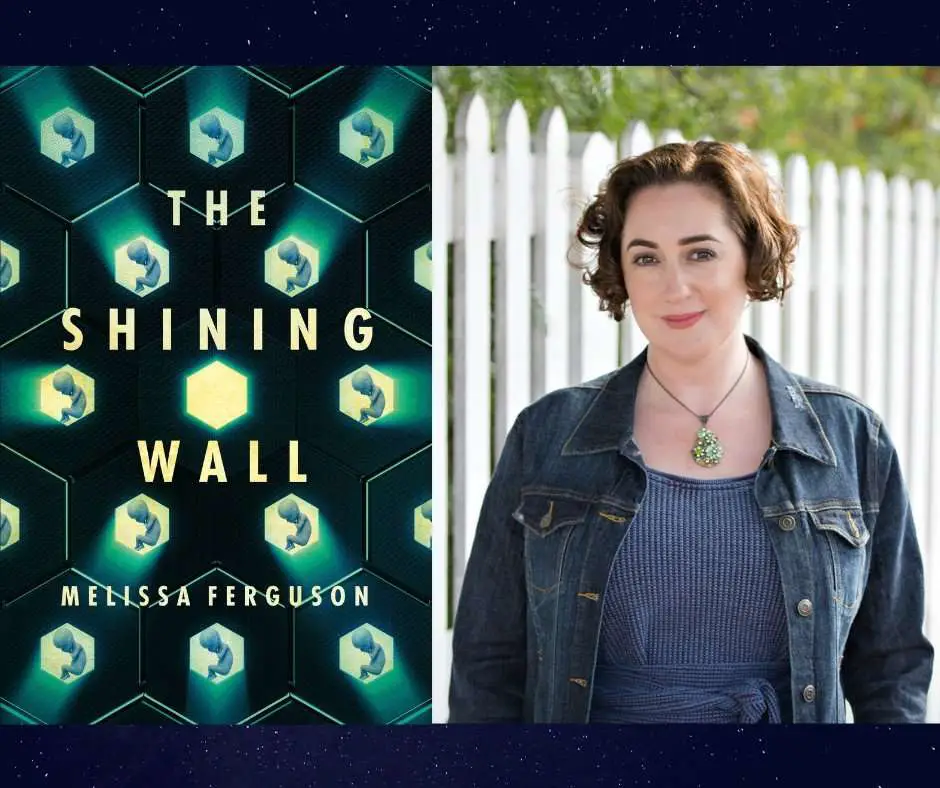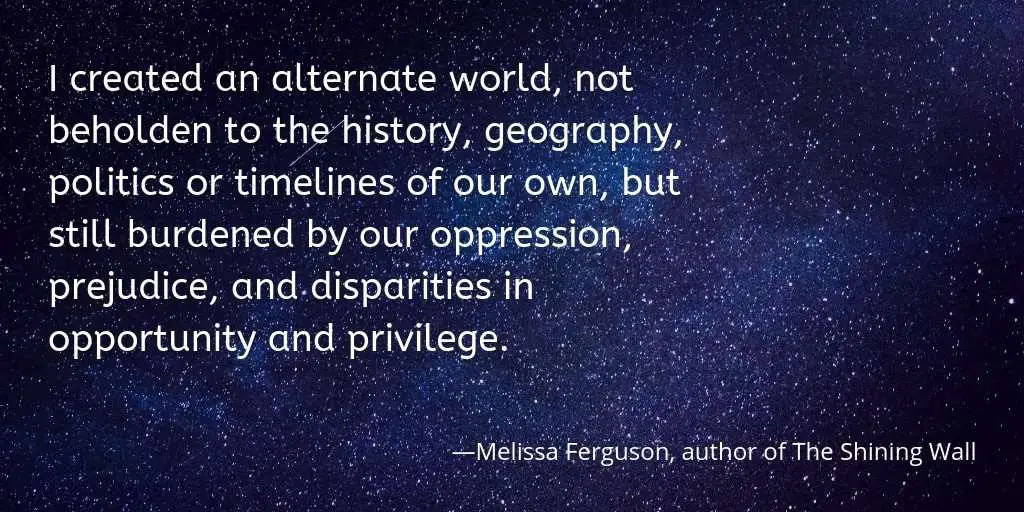Melissa Ferguson on what inspired her to write The Shining Wall
Today we welcome scientist and author Melissa Ferguson to share what inspired her to write her debut novel The Shining Wall.

The inspiration for The Shining Wall
The Shining Wall is set in a futuristic world where the divide between rich and poor has resulted in the emergence of a walled, corporate-run city, surrounded by slums. The story follows, Alida, a resident of the slums. Alida befriends Shuqba, a cloned Neandertal security officer, and their story unfolds as the civilization around them crumbles.
I first got the idea for what would eventually become The Shining Wall, when Harvard geneticist George Church claimed it could be possible to bring back extinct species such as Neandertals and woolly mammoths (Der Spiegel magazine, 2013). I was fascinated with the idea of Neandertals, one of our closest related species, and one with which our own species, Homosapiens, had interbred, walking among us. But when I dug into the science of de-extinction, I became convinced George was being overly optimistic with the timeline. However, there is a chance that in the future we’ll be able to reverse engineer a Neandertal genome from a modern human genome. So I needed to place my Neandertals in a futuristic world.
Imagining a resurrected Neandertal required research into what is known about the species from fossil evidence. I soon became a staunch defender of the reputation of Neandertals and I suspect modern humans are biased towards thinking all other species of human were extremely dim-witted compared to us. Thinking about why we could clone Neandertals, and how they might be employed and treated, brought up ethical concerns and issues of prejudice, exploitation and identity.
To create my futuristic world, I took some inspiration from Octavia Butler.
When Butler wrote the dystopian future of her Parable books she reportedly looked around at the problems of the time (the 1990s) and gave them 30 years to develop. She used past and present behaviours and repeating historical cycles of empires to ashes as a guide. It was easy to imagine a future with an increasing gap between rich and poor, erosion of food security, reduced access to healthcare, lack of job security, and environmental devastation.
I also researched current advances in science and technology and examined the predictions of futurists such as Ray Kurzweil. Then I gave my imagination free rein and created resurrected Neandertals and other extinct creatures, brain implants with high-tech features, blood borne medical nanites, recycling down to an elemental level, defensive forcefields, and consciousness uploading. I created an alternate world, not beholden to the history, geography, politics or timelines of our own, but still burdened by our oppression, prejudice, and disparities in opportunity and privilege.

All this research, worldbuilding and exploration culminated in a novel called Day of the Neandertals (aka Barely Human), which I finished in 2016. And while I got some interest in this manuscript it ultimately never attracted a publishing contract. In the meantime, throughout most of 2017, I wrote the story of Alida, a minor character in Day of the Neandertals. Alida is quite irreverent and outspoken. I wanted to explore how to she got to where I found her in Day of the Neandertals. I’ve always been interested in the stories of characters towards the bottom of societies and how they are affected by decisions made by the powerful.
The main question I was exploring when I wrote The Shining Wall was: ‘What happens — especially to individuals, like Alida and Shuqba, who have no real power — when a society experiences extreme inequality?’
~
Disclosure: If you click a link in this post we may earn a small commission to help offset our running costs.

The Shining Wall Synopsis:
In a ruined world, where wealthy humans push health and longevity to extremes and surround themselves with a shining metal wall, privilege and security is predicated on the services of cloned Neandertals, and the exploitation of women in the shanty towns and wastelands beyond the fortress city.
This is the frightening yet moving story of orphaned Alida and her younger sister Graycie, and their struggle for survival in the Demi-Settlements outside the wall. When the sisters are forced to enter the City by very different means they risk being separated forever.
Cloned Neandertal officer, Shuqba is exiled to a security outpost in the Demi-Settlements when she fails to adhere to the impossible standards set for her species within the City. Will she offer a lifeline to Alida or betray her?
The Shining Wall is at once a frightening parable of our unjust world of haves and have-nots, a richly imagined yet thrilling story of technological control and the fight for survival, and a paean to female friendship and power.
ISBN: 978-1-925760-18-7 Trade PB 298pp
(Transit Lounge Publishing, 1 April 2019)
Get your copy of The Shining Wall from:
Booktopia(Aus/NZ) | Angus&Robertson(Aus) | Transit Lounge
About the Author, Melissa Ferguson
Melissa Ferguson is a cancer-fighting scientist who loves to explore scientific possibilities through fiction. She lives in Geelong with her husband, two children and two guinea pigs. Her short fiction has appeared in Island Magazine, Luna Station Quarterly and Postscripts to Darkness. Her debut novel The Shining Wall is available now. You can connect with her on Twitter @melissajferg or at her website melissajaneferguson.com

